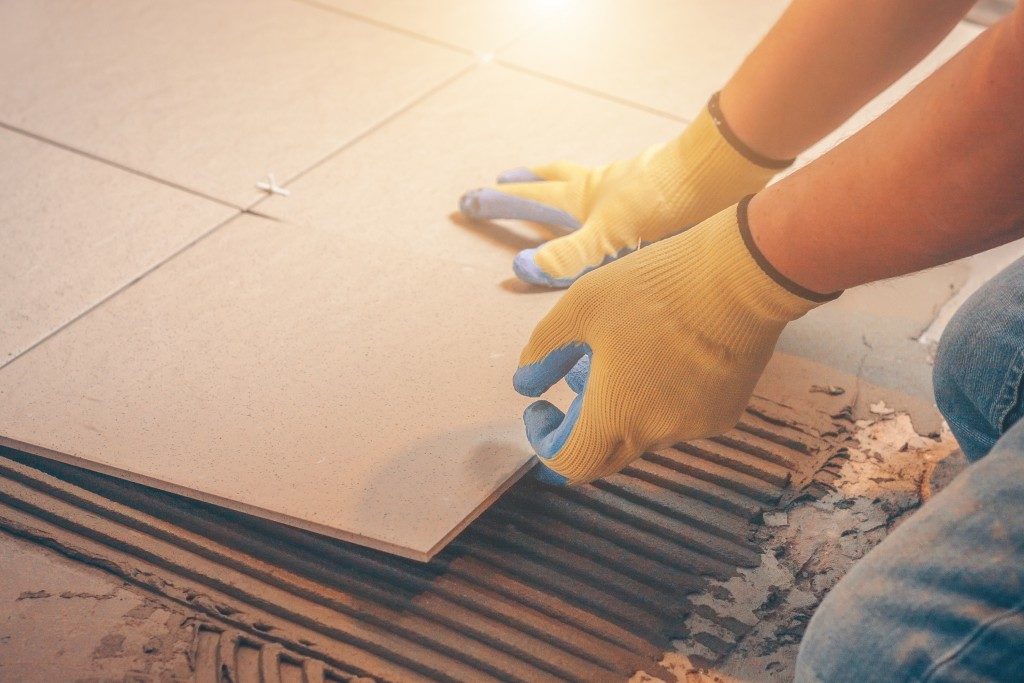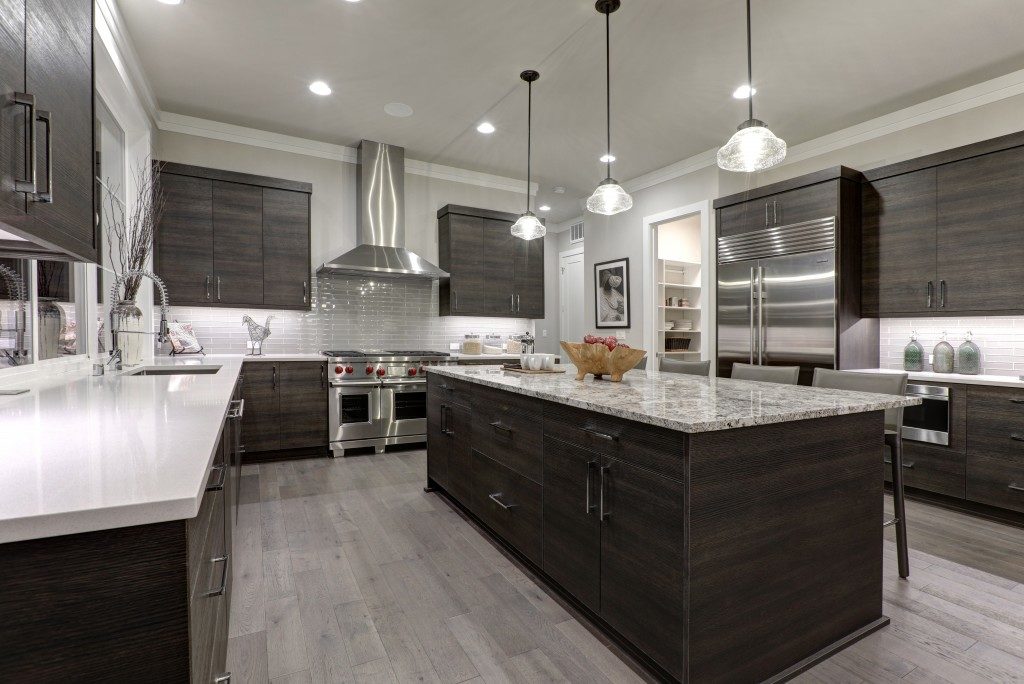The part of the kitchen where you plan to lay out new tiles may seem quite small, but tile installation involves hard work. Here is a basic installation guideline to complete a tile floor project from scratch with a wall tile levelling system that prevents accidents and injury.
Preparatory Activities
Good preparation takes away the hassle of having to undo what you’ve finished due to miscalculation and poor judgment. Before you can even place new tiles, make sure the surface is dry, clean, and levelled. If there are breaks on the surface, fill them up. When you see an uneven patch, smoothen it out. Look closely and check for signs of dirt, grease or wax and remove them. The surface where you’ll be laying down new tiles must be structurally sound as well.
To layout the tiles as required by design, make the necessary marks on the floor with chalk and be ready to adjust the marks before finalising them. Professionals use a system that identifies the centre with measurements from the centre point of each of the four walls. What you want is to create a seamless arrangement of squares radiating from the centre where you’d start laying out the plates.
The Installation Process
 Use the reference lines when you’re ready to lay out the tiles and do not hurry it up. The binder you use on the tile surface must only make contact with the entire back surface of the plate. For the binder to adhere completely, tap the plate in place and make it snug. If the external surface has a binder, it will mar the design so take care to remove any excess. Most of the time, professionals use a mortar or tile mastic when laying down tiles, but this requires skill and practice. So, let professionals lay down the new floor. The mortar they will utilise will make for a more durable floor and even finish.
Use the reference lines when you’re ready to lay out the tiles and do not hurry it up. The binder you use on the tile surface must only make contact with the entire back surface of the plate. For the binder to adhere completely, tap the plate in place and make it snug. If the external surface has a binder, it will mar the design so take care to remove any excess. Most of the time, professionals use a mortar or tile mastic when laying down tiles, but this requires skill and practice. So, let professionals lay down the new floor. The mortar they will utilise will make for a more durable floor and even finish.
The empty spaces in between the tiles will be filled with grout using a rubber float. Consider applying a sealer on the tile surface especially when using natural stone, which is quite porous. Premixed grout is the preferred product to use, and this even comes in a variety of colours. If any grout comes into contact with the tile surface, use a wet cloth or sponge to remove the substance, but do not wet the grout. After drying, a grout sealer would help preserve the floor surface you have so painstakingly laid out.
Preventing Slippage
An uneven floor increases the risk of slips and falls. You want a smooth, even, and safe floor without slippage. A wall tile levelling system will assure you that your hard work will result in a successful outcome. A levelling system is simple to use and cost-effective.
Are you ready to install new ceramic tiles in your kitchen? Spending the weekend laying down a new kitchen floor is an exciting and challenging prospect. Remember that the tile floors and walls can be unforgiving, and mistakes will cost you money. You can create a floor that looks as if it has been prepared by professionals if you are prepared, meticulous, and vigilant.


